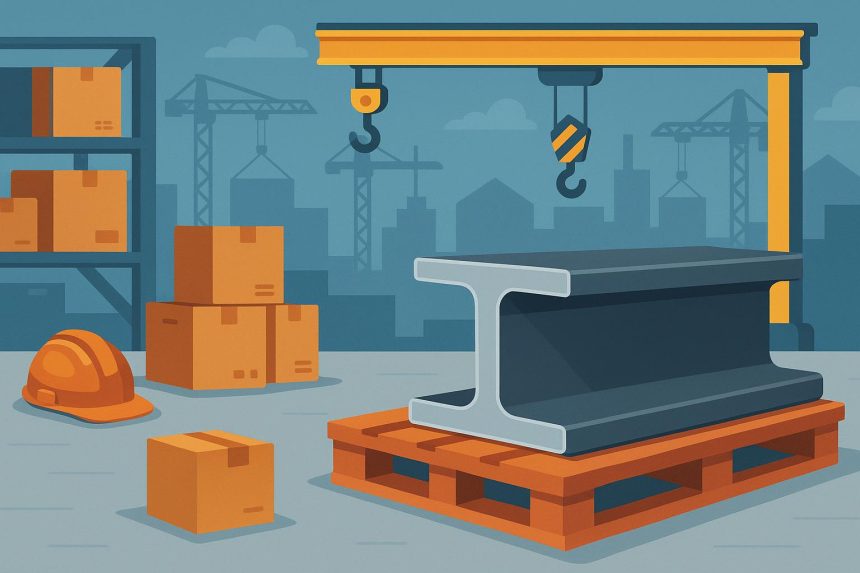A respected business leader and mentor, Steve Dulin has built his career at the intersection of business excellence and faith-based leadership. A graduate of Rice University, he founded Milestone Construction in 1990, leading the company through more than 2,500 successful commercial projects without delays or budget overruns. Later, he established MasterPlan Business Ministries, Inc. in 1996 to mentor business leaders using biblical principles. Drawing on his construction and leadership experience, Steve Dulin brings valuable insight into operational efficiency and proactive planning—key elements in topics such as beating long-lead delays through early material procurement. His perspective reflects decades of expertise in aligning disciplined processes with sound business practices to help teams deliver projects on time and within scope.
Beating Long-Lead Delays – The Case for Early Material Procurement
Material delays can throw even the most carefully planned commercial projects off track. A single late shipment can halt multiple crews, stretch timelines, and disrupt multiple phases of construction. Recent supply chain disruptions have exposed how vulnerable schedules can be when procurement is treated as an afterthought. Today, builders increasingly place it at the center of their scheduling strategies.
A “long-lead item” is any material or component that takes significantly longer to produce or ship than standard construction supplies. For example, electrical switchgear or custom curtainwall systems often require extended manufacturing timelines. If teams do not order these items early enough, their absence can disrupt installation schedules and push back commissioning and turnover dates.
When a critical component arrives late, the work that depends on it must stop. Delays cascade through trades, affecting framing, rough-ins, and inspections, often adding weeks to the critical path. These impacts accumulate quickly, which makes timely procurement decisions critical to keeping schedules on track.
Teams identify long-lead items well before construction starts. During design and preconstruction, builders collaborate with design teams and estimators to flag components that typically have extended lead times. They confirm timelines with manufacturers early and align procurement schedules accordingly. This groundwork reduces the chance of midstream surprises.
Early engagement with subcontractors and key vendors strengthens this process. By involving trade partners during design and preconstruction, teams gain accurate lead-time data directly from manufacturers and suppliers. Subcontractors often flag long-lead components earlier than schedules alone would reveal, allowing the project team to align procurement activities with real production timelines. This early coordination makes schedule projections more accurate and reduces the likelihood of surprises once construction begins.
Certain categories almost always fall into the long-lead bracket. HVAC equipment, structural steel, and custom-finished components usually require specialized fabrication or overseas shipping. Because their timelines are less flexible than standard stock materials, teams prioritize procurement for these items first.
Global manufacturing patterns make the stakes higher. Economic shifts, geopolitical disruptions, and shipping congestion have all lengthened lead times. Factory backlogs and port congestion delay even routine orders. Teams that rely on standard assumptions instead of verifying current conditions often encounter avoidable setbacks once work begins.
Teams now align procurement milestones directly with the project schedule. Once they identify long-lead items, they build procurement schedules that mirror the critical path. They set clear dates for shop drawing approvals, fabrication starts, and shipping milestones, then track them alongside field activities. This structured integration allows teams to detect potential delays early, before they affect field operations.
Owner decisions play a decisive role in keeping this timeline on track. Slow approvals on specifications push back purchase orders, shrinking already tight fabrication windows. Transparent communication about these dependencies helps owners understand how their choices directly affect procurement pacing and schedule certainty.
Even with careful planning, delays sometimes happen. Builders keep projects moving by resequencing tasks, installing temporary systems, or sourcing alternate components. These tactics limit the disruption caused by late arrivals and help keep overall delivery on schedule.
Early procurement also strengthens budget control. Purchasing materials earlier stabilizes pricing and shields projects from market swings, while reducing the need for expensive expediting or overtime to recover lost time.
As global supply chains keep shifting, builders who put early procurement at the center of planning and delivery will strengthen their competitive position. Teams that approach lead-time management as a core discipline strengthen their ability to adapt to volatile markets and tighter schedules. Field productivity and controlled material flow will drive the next generation of project timelines, favoring builders who anticipate lead times from the start.
About Steve Dulin
Steve Dulin is a seasoned business leader and mentor who integrates biblical principles into professional development. He founded Milestone Construction in 1990, overseeing more than 2,500 commercial interior finish-out projects with consistent on-time and on-budget results. In 1996, he established MasterPlan Business Ministries, Inc., where he serves as president, mentoring business leaders through faith-based frameworks. A recipient of the King’s College and Seminary LASER Award, he has appeared on platforms including TBN and Daystar. Dulin earned his bachelor’s degree from Rice University and continues to guide entrepreneurs and executives through principle-driven leadership.
Lynn Martelli is an editor at Readability. She received her MFA in Creative Writing from Antioch University and has worked as an editor for over 10 years. Lynn has edited a wide variety of books, including fiction, non-fiction, memoirs, and more. In her free time, Lynn enjoys reading, writing, and spending time with her family and friends.















